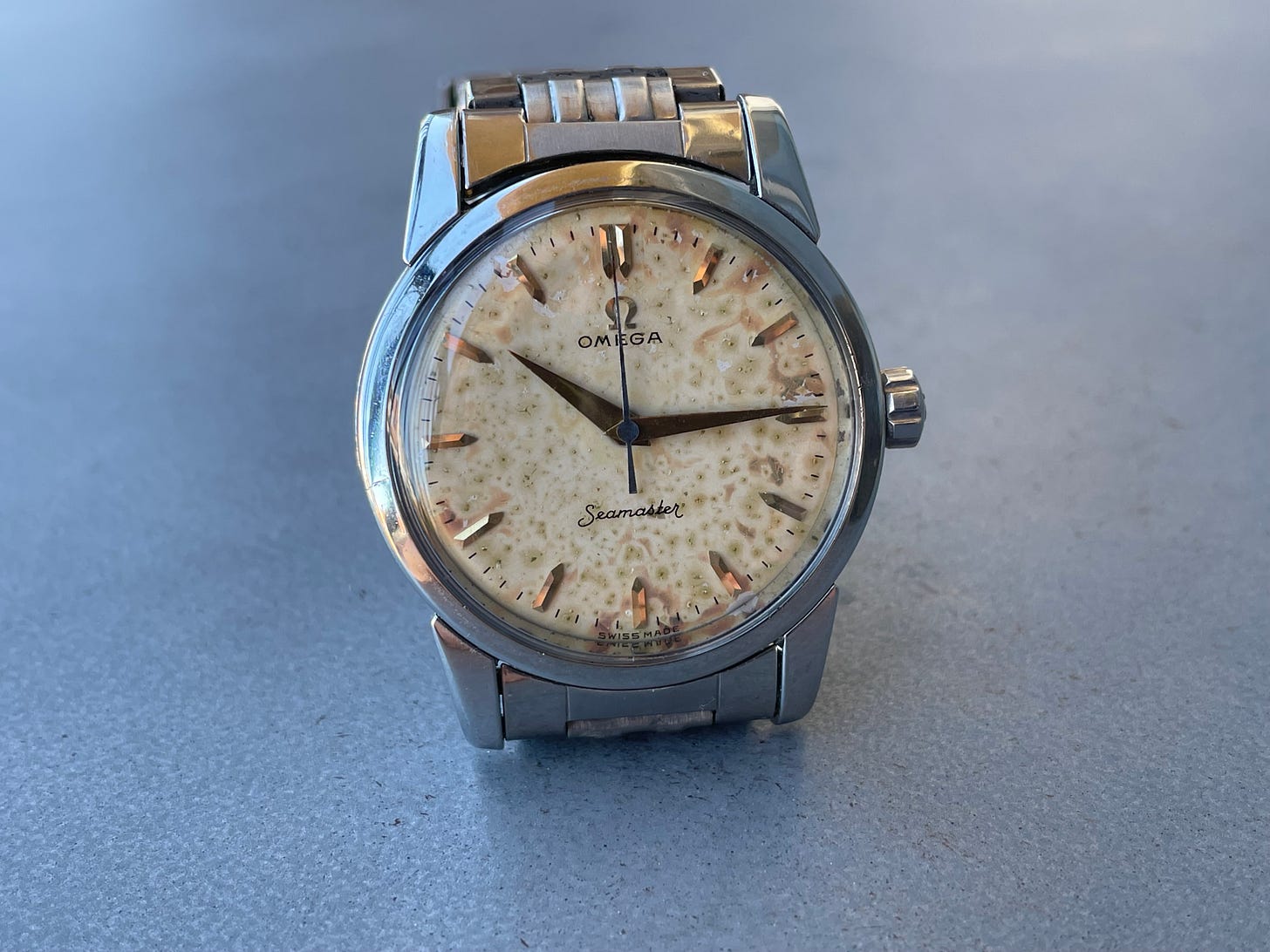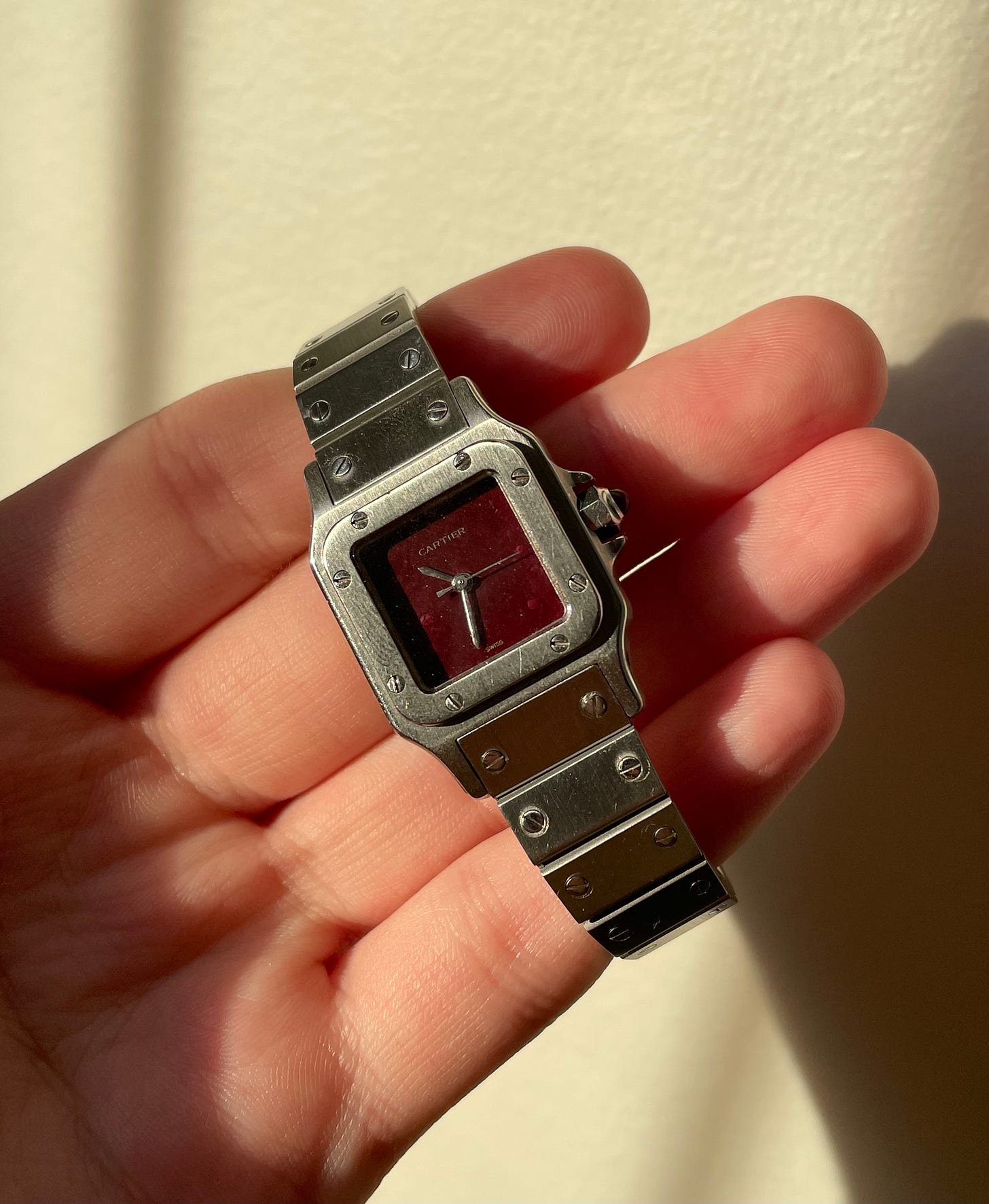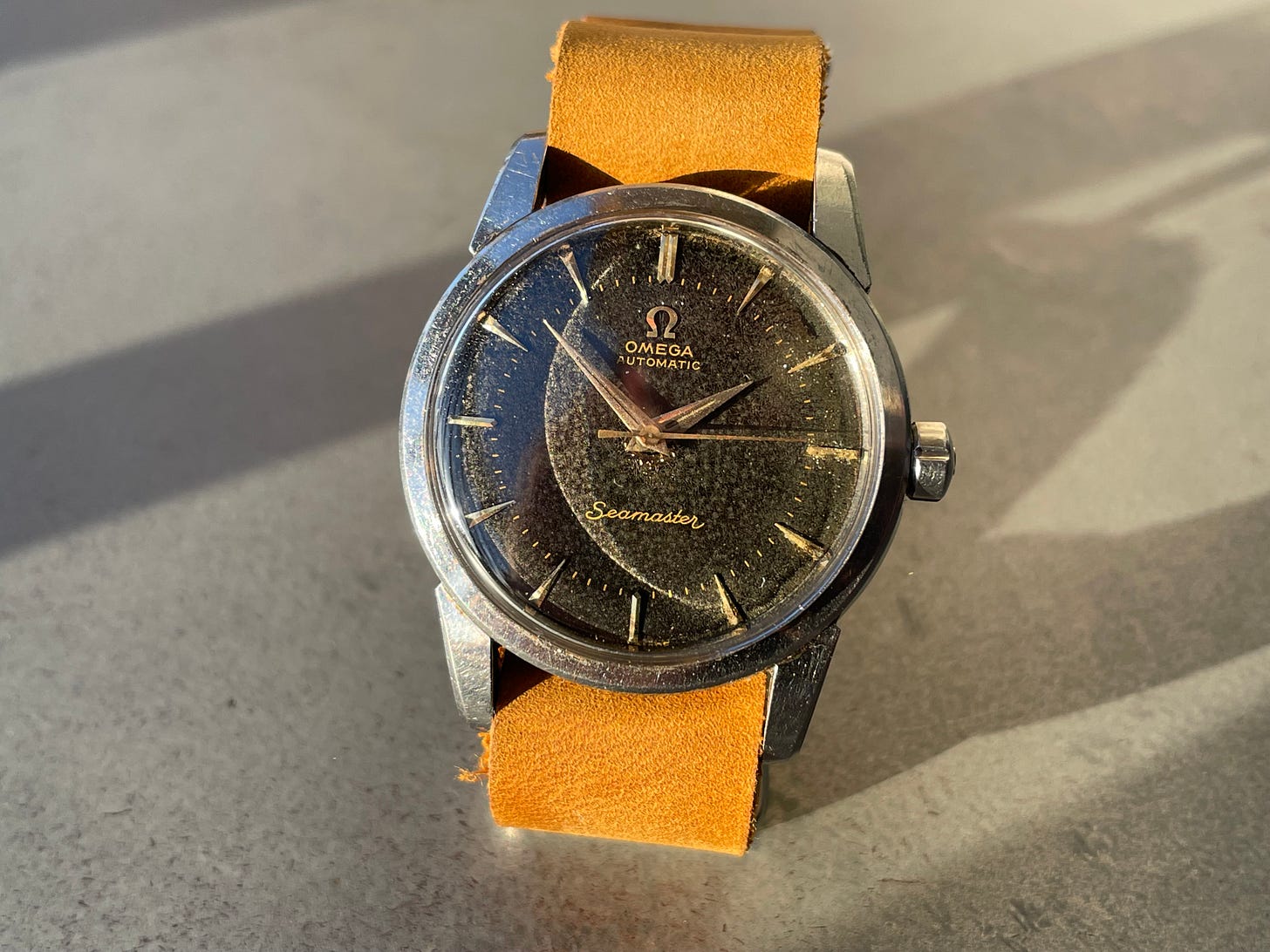Patina is one of the most debated topics in the watch community, especially amongst vintage enthusiasts. Some view patina in a positive light regarding it as natural beauty that comes with age. Others just see it as undesirable damage to a dial.
In today’s article, we explore this world of sabi by posing both unique and tasteful examples of patina. Our discussion will culminate with arguments on value and how patina can be either a coveted asset or a watch bust.
Patina or Damage?
While there are many different classes of patina, one could objectively categorize the subject into two distinct lanes - attractive, and unattractive.
You be the judge with this crème brûlée Seamaster
In my eyes, tasteful patina is not only important, but fun for the collector. However, there are some instances where a watch’s patina borders on being a bit too much. Now this relates to what patina is in definition.
The phenomenon is inherently dial ‘damage’ in the sense that it occurs through natural use and exposure to the elements. Constant UV exposure, or perhaps a lick of humidity causes dials and bezels to transform from factory originals to unique specimens. In some examples, patina has taken an ugly face, yet in others, it’ll cause a watch to fetch over 3 million USD at auction.
Ultimately, this topic has both senses of subjectivity and objectivity. Our case study to prove this argument is shown through the most expensive Speedmaster to ever sell at auction. With its gorgeous tropical dial being a class of coveted patina, one can assume that this factor helped contribute to such an impressive result amongst bidders.
On the flip side, my much less expensive albeit patinated Omega appeals to those like myself - collectors who chase original and unique dials. Yet to the masses, not everyone would be as keen as I was to add this piece to their watch box. That being said, this demonstrates how differences in interests apply to the patina argument showing a level of subjectivity.
Different Subclasses of Patina
The first subclass of patina I’d like to explore is what I call natural patina. This nickname lends itself to the fact that natural patination is the most common in vintage timepieces, and occurs to varying degrees. Natural patina encompasses everything from a tasteful tanning of the dial, to an all out psychedelic work of both UV and moisture exposure creating the most unique pieces.
This class of patina is defined as the type that can occur to most dials when age and natural exposure are a part of the equation. There isn’t any special dial paint or manufacturing defect needed for natural patina to take form. This requirement is what sets itself apart from the rest, and contributes to the commonality of this phenomenon.
My favorite watch, and the perfect case study of natural patina from exposure and age
Most instances of natural patina I’ve owned have been in the form of vintage Seamasters, particularly from the 1950s. However, this patina isn’t restricted to this line, and is commonly seen with everything from vintage Rolex to Seiko and everything in between.
Sure, there are instances of natural patina that are unattractive, but the degree in which that line is drawn is solely dictated by the individual collector. Because of this, natural patina is a spectrum in the watch community with extreme instances at each pole.
Perhaps you’re in search of something a bit more rare, but you still appreciate the beauty in natural patina. The summation of these factors leads me to discuss what are known as tropical dials.
I’ve noticed the term ‘tropical dial’ is often misused in the watch community, usually by dealers in attempts to fetch higher margins on pieces with natural patina. This is because tropical dials are not only much more rare but a valuable occurrence as well.
In definition, a true topical dial is the result of prolonged UV exposure turning a black dial to a warm chocolate brown. It is theorized that this is possible with a select group of watches were the dial paint reacts in such a way. Because of the beauty and rarity of a true tropical dial it’s the perfect recipe for collectability and clout. As you’d expect, their prices reflect this.
A true tropical Speedy from 1969 that I sold before tropical Speedmasters were in vogue
The final subclass of patina I’d like to explore is known as spider dials. Now it is debatable if this is actually considered patina at all, but it still has its place in this conversation due to the characteristics that constitute its definition.
Due to the lacquer or paint used to make certain dials, age and use has allowed for this beautiful ‘spidering’ effect to occur - basically cracking of the lacquer in a unique pattern. Like most patinated watches, no two spider dials are alike, and this enhances their collectability factor.
Typically coveted when a crown is involved, I’ve noticed how some Cartier pieces can develop this spider pattern.
Look closely, this vintage Santos has a lacquered dial that has the ‘spider’ pattern
How Patina Dictates Value
Unique instances of patina are often categorized by the most extreme poles of the patina spectrum. For instance, a deep salmon tone in a neo-vintage Rolex, or the maroon hue of a 1950s Seamaster.
The overarching theme, though, is that the more rare or beautiful a particular example of patina is, the greater its potential for an inherent premium on the market.
An unassuming Seamaster is typically in the 1k range - but the same piece with beautiful patina could make that price double. On the flip side, if the patina is unattractive, it could be half the price.
An example of tasteful patina that just so happens to be true tropical gilt - nothing too overbearing, but still adds so much character
This subjectivity adds to the ‘wild west’ state of the vintage market. However, there is one upside to this chaos.
Patina can serve as a solid indicator of originality. When a dial’s tone is both even and matching, one can often assign a certain age to the watch which is always a positive thing when assessing the originality of a vintage piece. Patina in this sense can also ease the worries that a dial has been repainted or touched up. While this isn’t always the case, it’s still a solid tool to have in your vintage collecting repertoire.
Final Thoughts
If you haven’t yet deduced my tone throughout this discussion, then I’ll let you in on a secret - patina is not only one of my favorite aspects of vintage collecting, but something I look for when considering a new piece. Patina - that is the attractive kind - adds a level of fun to this hobby that I couldn’t imagine being without.
Now don’t get me twisted - I love a nice clean dial. But a patinated dial is one I can truly call mine. There’s a one-of-a-kind factor to this argument where you’re guaranteed to never see a watch quite like yours in the wild. To me, I love the romanticism of that idea, and urge collectors to consider this aspect when fishing in the vintage market.







